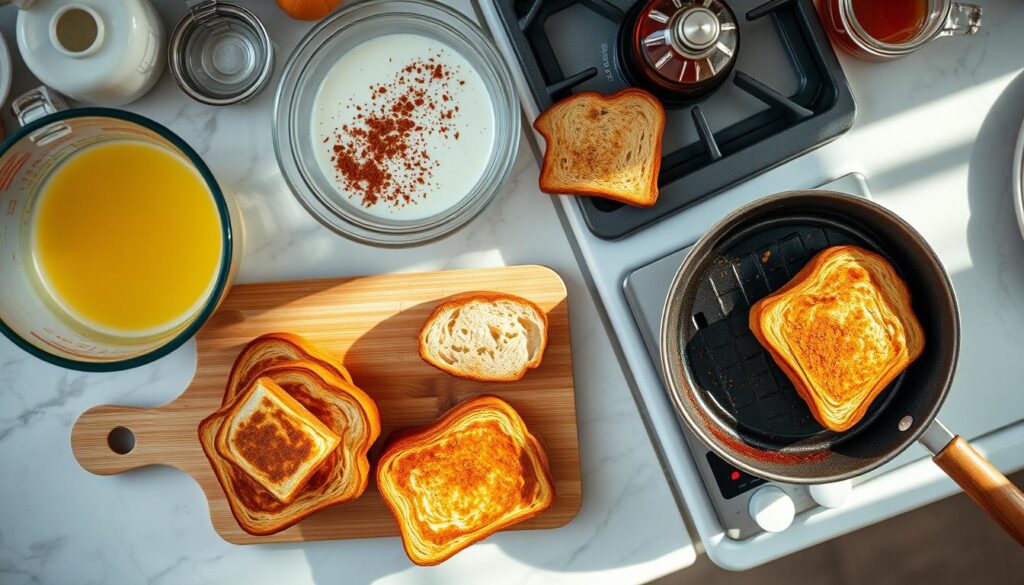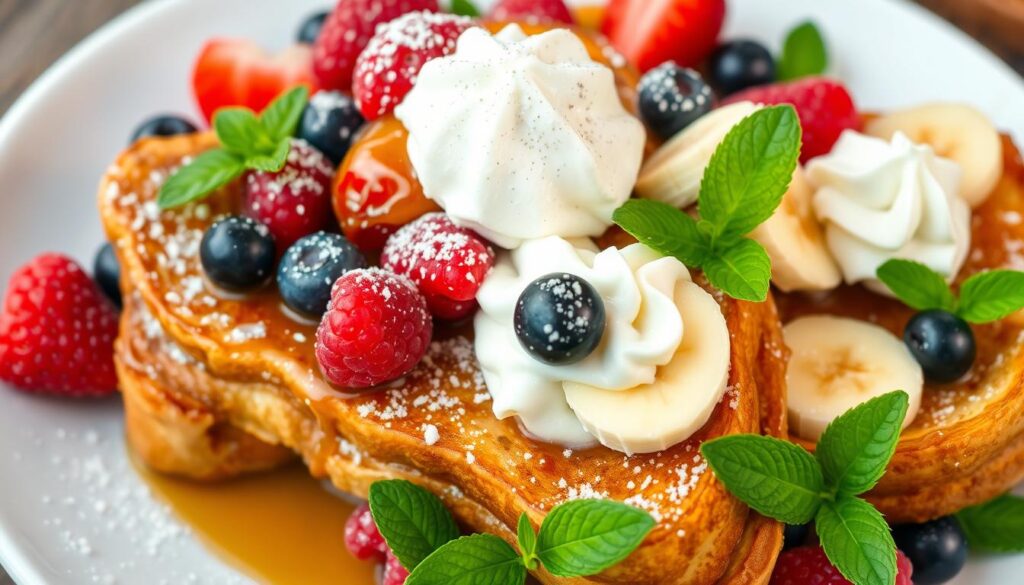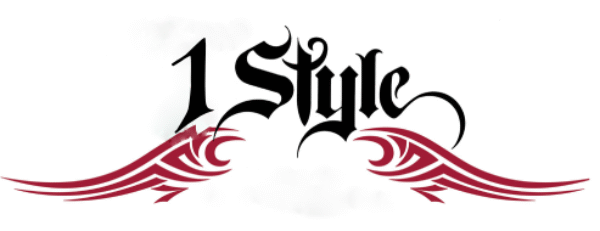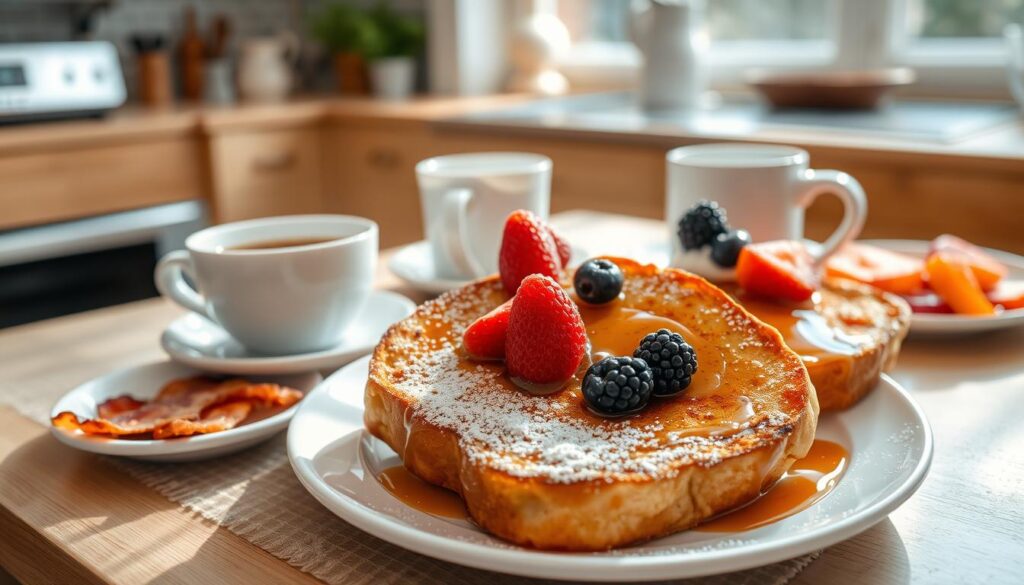Discover the perfect French toast recipe for a delicious and satisfying breakfast.
Table of Contents
French toast is a delicious and easy-to-make breakfast option that can be a great addition to any breakfast recipes collection. With its simple ingredients and quick cooking time, it’s no wonder why many people are looking for easy breakfast ideas to start their day.
Imagine a warm, golden-brown slice of bread, dipped in a rich egg mixture and cooked to perfection. This mouth-watering dish is not only a treat for the taste buds, but it’s also a great way to begin the day with a nutritious and filling meal.
Whether you’re a busy professional or a parent looking for a quick and easy breakfast solution, French toast is an excellent choice. It’s a versatile dish that can be made with a variety of ingredients and toppings, making it a great option for anyone looking for new breakfast recipes to try. With its ease of preparation and delicious flavor, it’s no wonder why French toast is becoming a popular choice for easy breakfast ideas.
The History and Origins of French Toast
French toast, a beloved breakfast dish, has a rich and fascinating history that spans centuries. The french toast history is a story of evolution, with roots in ancient Roman cuisine. The Romans are credited with creating a dish called “panis fritus,” which consisted of bread soaked in milk and then fried. This early version of breakfast origins laid the foundation for the modern French toast we know and love today.
As European cuisine evolved, so did the concept of French toast. The dish became a staple in medieval Europe, where it was often served as a sweet treat. The french toast history is marked by various adaptations and interpretations, with different countries adding their own unique twist to the recipe. In France, for example, French toast is known as “pain perdu,” which translates to “lost bread.” This name refers to the practice of using stale bread to make the dish, reducing food waste and creating a delicious meal.
The breakfast origins of French toast are also tied to the availability of ingredients. In the past, bread was a staple food, and using stale bread to make French toast was a practical way to reduce waste. The addition of eggs, milk, and sugar created a rich and flavorful dish that became a staple in many European households. Today, French toast remains a popular breakfast choice, with countless variations and interpretations around the world.
| Country | French Toast Variation |
|---|---|
| France | Pain perdu |
| United States | Stuffed French toast |
| Canada | Maple syrup French toast |
Ancient Roman Beginnings
The ancient Romans played a significant role in shaping the french toast history. Their recipe for “panis fritus” laid the foundation for the modern dish, and their influence can still be seen in the many variations of French toast found around the world.
Evolution Through European Cuisine
As European cuisine evolved, so did the concept of French toast. The dish became a staple in medieval Europe, where it was often served as a sweet treat. The breakfast origins of French toast are a testament to the resourcefulness and creativity of European cooks, who transformed a simple bread-based dish into a beloved breakfast classic.
Modern Day Popularity
Today, French toast remains a popular breakfast choice, with countless variations and interpretations around the world. The french toast history is a story of evolution and adaptation, with each country adding its own unique twist to the recipe. Whether you’re in the United States, France, or Canada, French toast is a delicious and satisfying breakfast option that is sure to please.
Essential Ingredients for Perfect French Toast
To make perfect French toast, it’s crucial to use high-quality french toast ingredients. The essential ingredients include fresh eggs, milk, and bread. When choosing these ingredients, consider their quality and freshness, as they will significantly impact the final taste and texture of your French toast.
A key aspect of creating delicious French toast is selecting the right type of bread. While any bread can be used, some types are better suited for French toast than others. Essential ingredients like eggs and milk should be fresh and of good quality. You can also add flavor enhancers like vanilla or cinnamon to give your French toast a unique taste.
Here are some key french toast ingredients to keep in mind:
- Eggs
- Milk
- Bread
- Sugar or sweetener (optional)
- Flavor enhancers (optional)
Using the right essential ingredients will help you create a delicious and mouth-watering French toast. Remember to choose fresh and high-quality ingredients to ensure the best results.
By following these guidelines and using the right french toast ingredients, you’ll be well on your way to creating the perfect French toast for your breakfast or brunch.
Choosing the Right Bread for French Toast
When it comes to making French toast, the type of bread used can make all the difference. The right bread for French toast should be able to soak up the egg mixture without falling apart, and still retain some texture and flavor. There are several types of bread that can be used, including Challah, brioche, and baguette.
Some of the best types of bread for French toast include:
- Challah: a dense, eggy bread that soaks up the egg mixture perfectly
- Brioche: a rich, buttery bread that adds a luxurious flavor to French toast
- Baguette: a classic French bread that works well for French toast, especially when it’s a day or two old
In addition to choosing the right type of bread, it’s also important to consider the freshness of the bread. Some people swear by using stale bread for French toast, as it soaks up the egg mixture better and has a more tender texture. Others prefer to use fresh bread, as it has a more vibrant flavor and texture. Ultimately, the choice between fresh and stale bread comes down to personal preference.
Bread Thickness Guidelines
The thickness of the bread is also an important factor to consider. Bread that is too thin may fall apart when cooked, while bread that is too thick may not cook evenly. A good rule of thumb is to use bread that is about 1-2 inches thick. This will allow the bread to cook evenly and retain some texture and flavor.
| Type of Bread | Thickness | Best For |
|---|---|---|
| Challah | 1-2 inches | Classic French toast |
| Brioche | 1-1.5 inches | Rich, indulgent French toast |
| Baguette | 1-2 inches | Crusty, chewy French toast |
By choosing the right type of bread and considering factors such as freshness and thickness, you can create delicious French toast that is sure to please even the pickiest eaters. Whether you’re using bread for French toast or just looking for a new breakfast idea, the right bread can make all the difference.
Classic French Toast Recipe
A classic french toast recipe is a staple breakfast dish that is easy to make and delicious to eat. To start, you will need a few basic ingredients, including eggs, milk, and bread. The type of bread you use is important, as it will affect the texture and flavor of the final product.
Here are the steps to make a classic french toast recipe:
- Crack 2-3 eggs into a bowl and whisk them together with a fork.
- Add 1/2 cup of milk and a pinch of salt to the bowl and mix well.
- Heat a non-stick pan over medium heat and add a small amount of butter or oil.
- Dip each slice of bread into the egg mixture, coating both sides evenly.
- Place the bread slices in the pan and cook for 2-3 minutes on each side, or until golden brown.
This easy recipe is a great way to start your day, and can be customized with your favorite toppings, such as syrup, fruit, or whipped cream.
With this classic french toast recipe, you can create a delicious and satisfying breakfast dish that is sure to please. Whether you’re in the mood for something sweet or savory, this easy recipe is a great option.
| Ingredient | Quantity |
|---|---|
| Eggs | 2-3 |
| Milk | 1/2 cup |
| Bread | 4-6 slices |
| Butter or oil | 1-2 tablespoons |
The Perfect Egg Mixture Ratio
When it comes to making French toast, the egg mixture ratio is crucial. A good egg mixture ratio can make all the difference in the texture and flavor of the final product. The ideal ratio is typically two eggs per slice of bread, but this can be adjusted based on personal preference and the type of bread being used. Experimenting with different egg mixture ratios can help you find the perfect balance for your French toast.
Cooking techniques also play a significant role in achieving the perfect French toast. The egg mixture should be cooked until it is just set, but still moist and creamy. Overcooking the egg mixture can result in a dry and rubbery texture. To avoid this, it’s essential to use the right cooking techniques, such as cooking the French toast over medium heat and flipping it frequently.
Some common flavor enhancers and spices that can be added to the egg mixture include cinnamon, nutmeg, and vanilla extract. These ingredients can add depth and warmth to the French toast, making it a delicious and satisfying breakfast or brunch option. Here are some tips for adjusting the egg mixture ratio and adding flavor enhancers:
- Start with a basic egg mixture ratio of two eggs per slice of bread
- Adjust the ratio based on personal preference and the type of bread being used
- Add flavor enhancers such as cinnamon, nutmeg, and vanilla extract to the egg mixture
- Cook the French toast over medium heat, flipping frequently to prevent overcooking
By following these tips and experimenting with different egg mixture ratios and cooking techniques, you can create the perfect French toast that is both delicious and satisfying.
Step-by-Step Cooking Instructions
To achieve perfect french toast cooking, it’s essential to follow the right cooking instructions. Start by preparing the bread, which involves slicing it into thick pieces and leaving it to soak in the egg mixture.
Preparing the Bread
The bread should be sliced into 1-2 inch thick pieces, depending on personal preference. It’s also crucial to choose the right type of bread, as it can affect the overall texture and taste of the french toast.
Dipping Technique
The dipping technique is a critical step in french toast cooking. The bread should be dipped into the egg mixture, coating both sides evenly. This helps to create a crispy exterior and a fluffy interior.
Cooking Temperature and Timing
Cooking the french toast at the right temperature and timing is vital. The ideal temperature is medium heat, and the cooking time should be around 3-4 minutes per side, or until the french toast is golden brown and crispy.
Here’s a summary of the cooking instructions in a table format:
| Step | Description | Timing |
|---|---|---|
| Preparing the Bread | Slice the bread into thick pieces | 5 minutes |
| Dipping Technique | Dip the bread into the egg mixture | 2 minutes |
| Cooking Temperature and Timing | Cook the french toast at medium heat | 6-8 minutes |

Common French Toast Mistakes to Avoid
When making French toast, it’s easy to fall into common mistakes that can ruin the dish. One of the most common mistakes is using too much egg mixture, which can make the French toast soggy and unappetizing. To avoid this, use a light hand when dipping the bread in the egg mixture, and make sure to coat it evenly. Another mistake is not using the right type of bread, which can affect the texture and flavor of the French toast. French toast tips suggest using a thick, sturdy bread that can hold up to the egg mixture and cooking process.
Some other common mistakes to avoid include:
- Not heating the pan to the right temperature, which can cause the French toast to cook unevenly
- Cooking the French toast for too long, which can make it dry and crispy
- Not using enough butter or oil in the pan, which can cause the French toast to stick and burn
By following these french toast tips and avoiding common mistakes, you can create a delicious and perfect French toast dish. Remember to use the right type of bread, cook the French toast at the right temperature, and don’t overcook it. With a little practice and patience, you can become a French toast expert and enjoy this tasty breakfast dish anytime.
- Not whisking the egg mixture well enough, which can create lumps and affect the texture of the French toast
- Not using fresh ingredients, which can affect the flavor and quality of the dish
Creative French Toast Variations
French toast is a versatile breakfast dish that can be modified to suit various tastes and preferences. One of the most exciting aspects of French toast is the numerous creative variations that can be made. From sweet to savory, and from traditional to international, the possibilities are endless. Exploring these creative variations can help you discover new favorite french toast ideas.
Some popular creative variations include stuffed French toast, where the bread is filled with sweet or savory ingredients, such as strawberries or ham. Savory options, like spinach and feta, can add a delicious twist to the traditional recipe. International versions, such as Japanese-style French toast with matcha and red bean paste, can also provide a unique and exciting experience.
- Try using different types of bread, such as brioche or challah, for a unique texture and flavor.
- Experiment with various spices and flavorings, like cinnamon or nutmeg, to add depth to your French toast.
- Top your French toast with fresh fruits, nuts, or whipped cream for a delicious and indulgent treat.
With these creative variations, you can take your French toast game to the next level and enjoy a new and exciting breakfast experience every time. Whether you’re in the mood for something sweet or savory, there’s a French toast variation out there for you. So go ahead, get creative, and indulge in the world of french toast ideas.
| Variation | Ingredients | Description |
|---|---|---|
| Stuffed French Toast | Bread, filling (e.g. strawberries, ham) | Filled with sweet or savory ingredients |
| Savory French Toast | Bread, eggs, savory ingredients (e.g. spinach, feta) | Savory twist on the traditional recipe |
| International French Toast | Bread, eggs, international ingredients (e.g. matcha, red bean paste) | Unique and exciting international flavors |
Best Toppings and Accompaniments
When it comes to French toast, the best toppings and breakfast accompaniments can elevate this classic dish to a whole new level. From sweet treats like maple syrup and fresh fruit to creamy delights like whipped cream, the options are endless. To create the perfect combination, consider balancing flavors and textures by pairing crunchy elements like nuts or seeds with smooth toppings like yogurt or honey.
Some popular best toppings for French toast include:
- Fresh berries, such as strawberries or blueberries
- Caramelized bananas or other fruits
- Chopped nuts, like almonds or walnuts
- Shaved chocolate or chocolate chips
- Cream cheese or mascarpone cheese
In addition to these sweet treats, breakfast accompaniments like crispy bacon, savory sausage, or toasted hash browns can add a satisfying crunch to your French toast. Experimenting with different combinations of toppings and accompaniments can help you find your perfect match. Whether you prefer classic and simple or bold and adventurous, the right toppings and accompaniments can make your French toast truly unforgettable.

By exploring the world of best toppings and breakfast accompaniments, you can take your French toast to new heights and create a delicious, one-of-a-kind breakfast experience that will leave you wanting more.
| Topping | Description |
|---|---|
| Maple Syrup | A classic sweetener made from the sap of maple trees |
| Fresh Fruit | A healthy and flavorful option, perfect for adding natural sweetness |
| Whipped Cream | A rich and creamy topping, great for balancing sweet and savory flavors |
Make-Ahead and Storage Tips
When it comes to French toast, having a few make-ahead tips up your sleeve can be a game-changer. Whether you’re preparing for a busy morning or want to enjoy your French toast throughout the week, proper storage instructions are essential. To keep your French toast fresh, consider storing it in an airtight container in the refrigerator for up to 3 days.
For longer-term storage, freezing is a great option. To freeze French toast, simply place the cooked slices on a baking sheet lined with parchment paper and put it in the freezer. Once frozen, transfer the slices to a freezer-safe bag or container for easy reheating. When you’re ready to reheat, simply toast or microwave the frozen French toast until it’s crispy and golden brown.
Freezing Instructions
- Place cooked French toast slices on a baking sheet lined with parchment paper
- Put the baking sheet in the freezer until the slices are frozen solid
- Transfer the frozen slices to a freezer-safe bag or container
Reheating Methods
To reheat frozen French toast, you can use a toaster, microwave, or conventional oven. Simply toast or microwave the frozen French toast until it’s crispy and golden brown, or bake it in the oven at 350°F (180°C) for a few minutes until heated through. By following these make-ahead tips and storage instructions, you can enjoy delicious French toast all week long.
| Storage Method | Shelf Life |
|---|---|
| Refrigerator | Up to 3 days |
| Freezer | Up to 2 months |
Nutritional Information and Dietary Modifications
French toast can be a nutritious breakfast option, but it’s essential to consider the nutritional information and make dietary modifications to suit your needs. A typical serving of French toast contains around 200-300 calories, with a significant amount of carbohydrates and sugar.
When it comes to dietary modifications, there are several ways to make French toast a healthier option. Using whole wheat bread instead of white bread can increase the fiber content and reduce the glycemic index. Additionally, reducing the amount of sugar used in the recipe can help decrease the calorie count.
Calorie Breakdown
A breakdown of the nutritional information for French toast reveals that it is relatively high in calories, fat, and sugar. However, it can also be a good source of protein and fiber, depending on the ingredients used. To make a healthier version of French toast, consider the following tips:
- Use whole wheat bread or a whole grain alternative
- Reduce the amount of sugar used in the recipe
- Use egg whites instead of whole eggs to reduce cholesterol
- Add fresh fruit or nuts for added fiber and nutrition
Healthy Alternatives
For those looking for healthier alternatives to traditional French toast, there are several options available.
Cooking with almond milk or coconut milk instead of regular milk can reduce the calorie count and add a creamy texture
. Furthermore, using a non-stick pan or cooking spray can reduce the amount of oil needed for cooking.
By making a few simple dietary modifications and considering the nutritional information, French toast can be a delicious and healthy breakfast option for anyone.
Conclusion
As we conclude our exploration of the delectable world of French toast, it’s clear that this timeless breakfast delight has evolved from its ancient Roman roots to become a beloved staple in kitchens around the globe. From the essential ingredients to the perfect cooking techniques, we’ve uncovered the secrets to crafting the ultimate French toast experience.
Whether you prefer the classic version or adventurous variations, the options are endless when it comes to personalizing your French toast creations. Experiment with different breads, spices, and toppings to discover your own signature style. Remember, the joy is in the journey, so don’t be afraid to get creative and have fun in the kitchen.
As you embark on your French toast adventures, we encourage you to savor every bite and share this indulgent experience with your loved ones. Bon appétit and happy cooking!



